Physical Address
304 North Cardinal St.
Dorchester Center, MA 02124
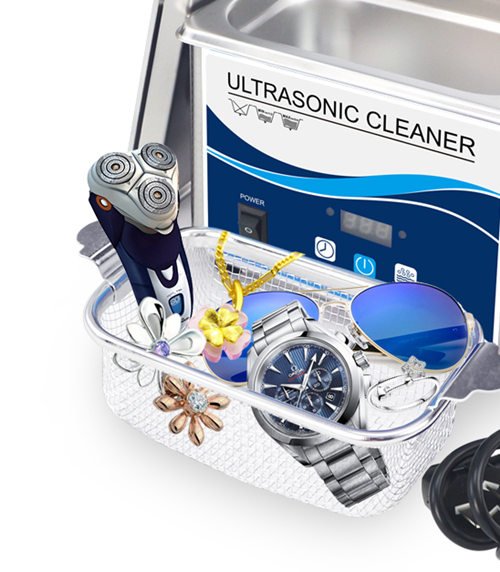
If your sterling silver jewelry is highly tarnished with black specks all over and the top-recommended home cleaning remedies don’t seem to work, your Google results and even recommendations on Pinterest will most likely point you towards a more reliable jewelry cleaning solution – the use of an ultrasonic jewelry cleaner. Ultrasonic cleaning is also considered the best approach for cleaning your family heirlooms, as long as it’s not bedazzled with delicate stones.
Wondering what an ultrasonic cleaner is or what about this cleaner makes it the best-recommended option for cleaning jewelry? Keep reading to learn more about ultrasonic cleaners.
An ultrasonic cleaner is the top-recommended jewelry cleaning solution for all the jewelry that calls for a little more than usual TLC. It cleans in minutes and leaves you with a pristinely cleaned piece of jewelry.

An ultrasonic cleaner can, therefore, be defined as a device that is used to clean items, but most frequently, it’s used to clean jewelry. This device cleans items perfectly by the use of special cleaning chemicals and ultrasound waves. It also creates heat and a significant amount of pressure that will not just clean the surface of the jewelry perfectly but also strip that jewelry of dirt, oil, grime, and tarnish present on the surface of the jewelry and also in the hidden crevices. In addition to cleaning jewelry thoroughly and tarnish removal, the ultrasonic cleaner will also polish the jewelry by using specific polishing solutions or rouges for the more delicate pieces of jewelry.
The high-frequency ultrasound waves generated and used by the ultrasonic cleaner range from 20 to 400kHz, and these waves are sent into the deepest parts of the jewelry to pull off all unwanted particles from the jewelry, hence the cleanest, contaminant-free pieces of jewelry.
Note that ultrasonic cleaners work well in cleaning not just jewelry but also some of the most delicate lenses, engine parts, surgical instruments, motherboards, and some of the long rifles. To do all this, this cleaner makes use of chemicals that are introduced into an aqueous media where ultrasound, high-frequency waves will remove foreign particles along with contaminants like tarnish, oil, mold from the jewelry. The presence of mold-releasing agents and the polishing compounds ensure the best cleaning performance of the cleaner.
Other than deep cleaning the jewelry with stubborn stains and tarnish, the ultrasonic cleaner will not cause any damage to your delicate jewelry, even when immersed in the solution – just make sure that the jewelry is made of materials that are safe to be immersed in the ultrasonic cleaner. Also, the item to be cleaned must be one that dries easily. So, no absorbent materials or items unless you could dry them using a blower.
At the heart of an ultrasonic cleaner and the reason for the effectiveness of the cleaners lies the microbubble – millions of microbubbles, to be specific. These microbubbles are created from the alternative positive and negative pressure waves as they move through the aqueous cleaning solution. The process through which the waves create the bubbles is known as cavitation. This is the most important process in ultrasonic cleaning.
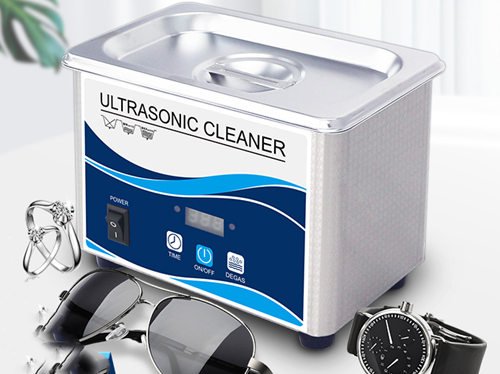
To understand how cavitation works, think about the spinning propellers of a boat and all the small bubbles that are created in the process. Well, this what happens in the ultrasonic cleaner, and it is cavitation in real life. The only difference is that there are no propellers in the ultrasonic cleaners, and in their place, the ultrasonic cleaners make use of the highly amplified vibrations resulting from the cleaner’s powerful, high-frequency transducers. These transducers operate at a high frequency of between 20 and 400kHz from where the sound waves are sent into the cleaning aqueous solution where the liquid media is cavitated, creating microbubbles.
It doesn’t end here, though, and the microbubbles are still needed for the cleaning process – this happens when the microbubbles collapse or implode. The collapse and implosion happen as fast as the microbubbles are formed, pretty much million times per second, and when this happens, it results in the creation of vacuum energy taking on the form of heat and pressure. The combination of high heat, pressure, and velocity means that the microbubbles travel at lightning-fast speeds, knocking loose debris from the surface and crevices of jewelry, hence the cleaning power and efficiency of the ultrasonic cleaners.
Therefore, each time a highly tarnished piece of jewelry is put in the ultrasonic cleaner and the device is switched on, there is cavitation next to the jewelry, followed by tiny implosions that create a vacuum, and subsequently, heat, pressure, and a high-velocity environment that clean the piece in question. The tiny high-pressure waves will go into the jewelry’s nooks and crannies, knocking out all grime, dirt, and oil, as well as tarnish in and on the surface of the jewelry, breaking and dislodging them easily.
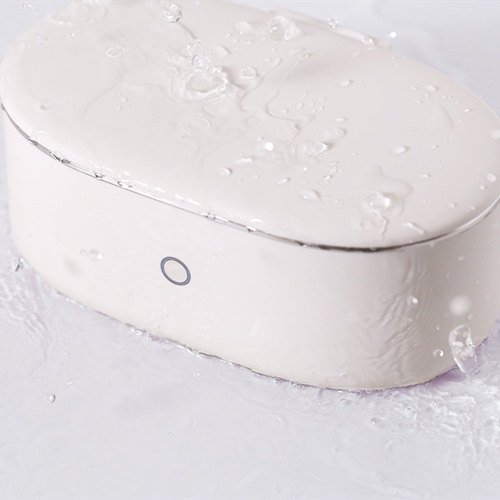
Yes, the ultrasonic cleaners boast a high cleaning power that makes them capable and effective in cleaning all your dirty jewelry, restoring its original shine, leaving you with pieces of jewelry that look as good as new.
So, if you are looking for a device that will clean your jewelry well, getting rid of up to 99.9% of all the contaminants, including bacteria, grease, grime, dirt, mold, and/or bloodstains, get a portable ultrasonic cleaner. As long as the jewelry isn’t made of organic and delicate materials like precious stones, organic stones, pearls, or tungsten, an ultrasonic cleaner is quite gentle, and it will effectively get rid of all dirt from your delicate diamond engagement ring or sterling silver wedding band.
If you are using an ultrasonic cleaner to clean the wrong kind of jewelry, then this device will damage the jewelry. You need to remember that despite the effectiveness of the ultrasonic jewelry cleaner, not all kinds of jewelry can withstand the pressure, heat, and the high-velocity of the waves from the microbubbles’ cavitation. Therefore, you must research first to determine which kinds of jewelry can be cleaned in an ultrasonic cleaner and the jewelry that you’d have to clean using other means.
To protect your investment, some of the types of jewelry that would be damaged by the ultrasonic cleaner include pearls that would be loosened by the ultrasonic cleaner, brittle precious stones like topaz, emeralds, onyx, lapis lazuli, amber, turquoise, as well as the porous organic gems such as jet and coral. Other gemstones that would be damaged by the ultrasonic cleaner include colored diamonds, feldspar, and malachite.
Costume jewelry and tungsten would also be damaged by the ultrasonic cleaner.
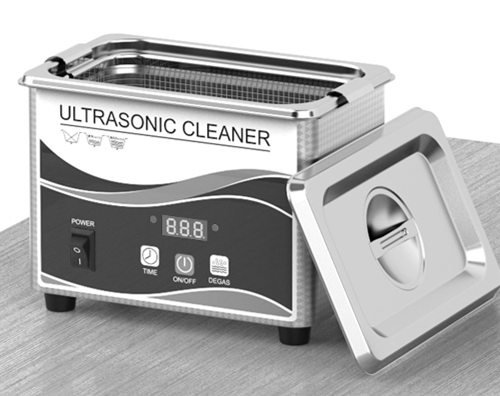
Find the right cleaning solution
To use the ultrasonic cleaner correctly, the first thing you must do is to determine what the right cleaning solution for the ultrasonic cleaner is. Bear in mind that although you could use water because it is the best cleaning solvent, after all, you might have to find the most appropriate cleaning solution – you cannot use regular cleaning agents. This is because cleaning jewelry correctly while taking into account their delicate nature means being able to find and use a solution that is rather potent to clean out all the grime and tarnish while protectively cleaning the delicate, precious stones too.
Gather your cleaning supplies
In addition to the ultrasonic cleaner, you will also need gloves, an ultrasonic basket, water, a cleaning solution that is water-based, a measuring jug, and of course, the jewelry that needs to be cleaned.
Once you have everything you need to clean the jewelry, follow the steps below:
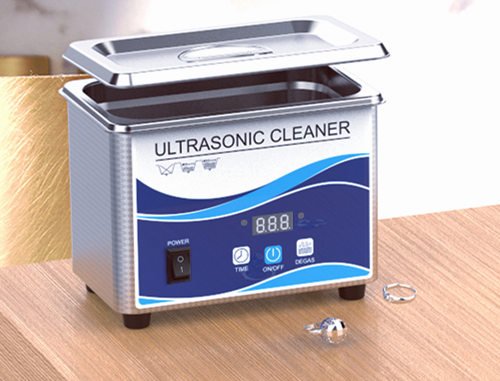
Ultrasonic jewelry cleaning steps
You now understand how the ultrasonic cleaner works, how to use the device, and also the kind of jewelry that can be cleaned in the cleaner. So, if you were planning to buy or use the device, you now know all there is to know about the device.